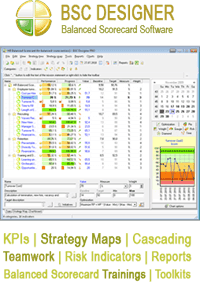Business development metrics and scorecard
Linking business development plan to Balanced Scorecards
In a globalized economy companies often find the task of business development to be far more challenging than their initial plans which may even have a textbook simplicity about them. While a traditional business development plan may be good in itself if may suffer from inadequacies resulting out of a lack of attention to evolving market details and changing taste patterns.
The business environment in 21st century has seen a seismic change with consumers getting access to an ever increasing range of choices for products and services. The internet has been an enabler of open dissemination of information and with social networking and blogging gaining ground, customers today can rapidly shift opinion about a brand and even measure its value with its competitors with ease. Even large organizations cannot hide behind their preeminent market position or economies of scale while pursuing their business development objectives. New upstarts and innovative companies are already pushing at the established order in many industries and competition for new business is at an all-time high. As consumers choices become less stable and the business race heats up, it becomes critical for businesses to evaluate the need to redefine their business development plan and tailor it with the changing times.
The Business Challenge
At times management is aware of complexities that await them in the real world but are reluctant to see the light and naively pursue policies under misplaced belief that with time the performance will improve. Different organizations use different measures to deal with the challenge of developing their business under a dynamic market conditions - some tend to remain idealistic and present their potential and existing customers with a set of facts about their products , which while being true, scores low on garnering instant attention. On the other hand some managers end up believing that hype based marketing campaign based on sheer can give dividends and end up tailoring their business development plans in the same vein. However soon they realize that such a approach can only bring temporary benefits and gain customers who have limited loyalty with brand they purchase. The goal of getting the right balance can often become a unending paradox unless proven performance measurement paradigms are not introduced.
The Solution
The complexity of the business development challenges that managers typically experience lead them to explore different performance management tools. At times managers can go ahead introduce complex concepts that do more harm than good or even start the use of costly software which may fail to address the specific issues at hand. This leads to the loss of valuable time and effort and can also lead to wrong decisions.
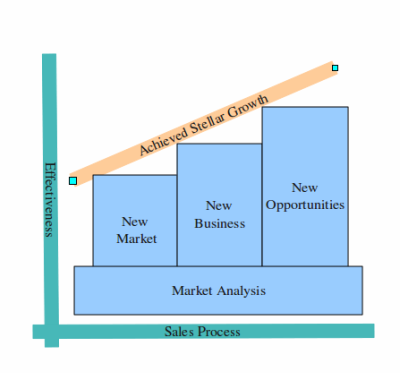
The ideal solution should be something which is easy to understand and does not come with intricate levels of ambiguity that whole exercise comes across as a waste. Rather than indulging in experimentation, a simple research can allow managers to realize that amongst the several techniques that are in vogue today, the balanced scorecard comes across the most potent tool in terms of overall effectiveness.
| Business Management Metrics: Business Mission and Vision, Business Strategy, Public Sector, Non-Profit, Private Sector, Service Level Agreement |
The balanced scorecard offers a holistic way to link and measure a business development plan and it successes by correlating the various business development goals with their respective performance metrics. As a performance evaluation tool it focuses in balancing the key elements that together form the big picture and therein lies the success of this much used technique.
The Linking Process
Before one can go down to the task of linking a business development plan to balanced scorecard it would be prudent to lay focus on various elements of a business development plan. A business development plan broadly covers a whole gamut of activities ranging from acquiring new clients to maintaining relationships with prospects besides core activities of marketing, branding and advertisement. The best way forward involves categorizing each major business development activity into a separate balance scorecard which can adequately lay stress on the performance of that group of tasks. For example if we talk about client relationship management - we can look at evaluating various key indicators which can be pointers towards the success of the process and place them accordingly on a balance scorecard To start with, in CRM we can take parameters like fees under management, customer profiling, customer profitability, technology used for customer contact etc under our consideration. Similarly a scorecard can be developed for lead generation which will reflect on parameters like lead sources, lead contact management, pitching success rate etc amongst others
Finally all major business development tasks need to be finally consolidated under one comprehensive business development scorecard which will offer a macro picture of the overall process. Interestingly one can study the scorecards in a relative manner with each other and with the overall business development scorecard to check the correlative effect of a particular parameter or a perspective group on the functioning of other process elements. This also allows the management to understand the specific fluctuations noticed on account of change in a given element. For example if the price of the product is increased by a certain factor its effect on overall sale, profitability, customer response and brand value can be quickly gauged.
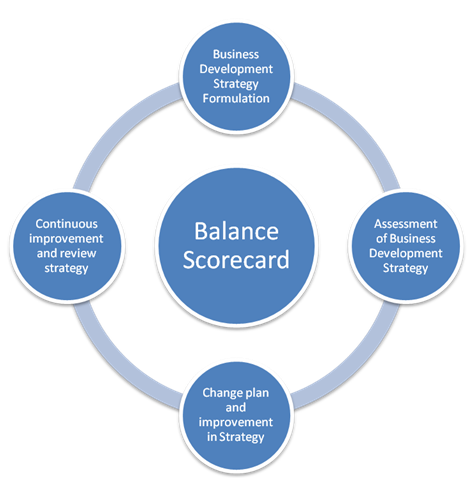
The usage of balance scorecard will allow us to visualize the operations in context and gain from the insight we can draw - both broad and specific to optimize the business development process. Wherever we find that certain perspective group in a certain scorecard is falling below our bench-marked( or target)expectations, swift action can be mandated to rectify the anomaly. At a strategic level balance scorecards help in planning new business development capabilities, in understanding the areas that still need improvement and how to prioritize them. In essence, specific, measurable metrics that are regularly and consistently measured can help bring in many benefits to the process of business development and offer quick results in dynamic markets.
Process Metrics
When you are trying to gauge the performance of a company, you could always compare the financial results of the company over a period of time and come to a certain conclusion. However, would that give you a complete picture of how the company is really doing? Are there any other aspects of the business that are not reflected in the financial results but could have a bearing on the future performance of the company? Also, do the financial results tell us how well the company is planning for the future?
| Business Intelligence Metrics: Competitor Analysis, Marketing Research, Benchmarking. |
It is important that enterprises that are financially successful continue to assess themselves not just in terms of the profits they are making but also in other dimensions of their business. Business metrics or Process metrics are some of the most important metrics that can be used by a business to assess their overall performance as well as identify areas where they can improve. Business metrics can be defined as any type of measurement that is used to assess, in quantifiable terms, a particular aspect of the company's performance, such as:
- Revenues and EBITDA (earnings before interest, taxes, depreciation, and amortization)
- Return on Investment (ROI)
- Customer and Employee retention rates, and so on.
Metrics placed on a balance scorecard will thus help you correctly assess the performance of your business in particular areas. The only way you can determine if your business has the ability to meet the demands of your customers for now and in the future, as well as the ability to meet other business objectives is by setting certain performance and customer satisfaction standards. These standards translate into key process metrics that help your business focus on developing a good, customer-oriented process management system and also guide you into continuously improving various aspects of the business. It is therefore important that along with the development of strategic goals for a business, objective and quantified sets of metrics hierarchically linked to these goals are also developed, as they will help understand what progress the business has made towards achieving the goals and what are the areas it needs to improve in.
On the other hand, merely developing a set of metrics and publishing them on a regular basis is not sufficient. Process metrics for instance, measure what is most important to an enterprise. You can use approaches such as Balanced Scorecard Methodology or Key Performance Indicators to understand and evaluate the performance of the business through different perspectives, say Financial Results, Customer Relations and Human Resources. Businesses can use these metrics to hold employees accountable, increase customer satisfaction levels and drive results.
Today, business metrics or process metrics have become part of a much larger business intelligence gathering effort that utilizes a wide range of technologies and applications to gather, store and analyze data. The information gathered and metrics generated in turn help transform the mission statement and business strategies of an enterprise into tangible, quantifiable goals. Process metrics thus help monitor the performance of the organization and helps it stay on track as it aims to achieve its business goals.
Project Metrics
The term 'Project Metrics' seems to be a very popular term in almost every kind of industry today. In fact, every project manager handling a project and team members seem to need and discuss project metrics. So, how do we define project metrics and more importantly, what purpose do they serve? A simple way of defining project metrics would be to say that they are a system of measurement that help us understand the progress we have made in a project. However, project metrics also give us information that helps us control the project and a means by which we can assess the final deliverable of the project.
Very often, once a project has been completed, a business wants to get some feedback on how successful the project was - was it delivered in time and was it completed within the budget allocated? The business might also want to know if all the requirements have been included, specifications met and what the level of customer satisfaction has been. Very often, senior management might want to see regular reports on the progress made in the project, especially in terms of the cost and time taken. Project metrics thus form an important part of project management and some key project metrics include:
- Cost: Measurement of the actual cost of the project versus the budget originally allocated
- Schedule: Original delivery date and delay in number of days from the original delivery date
- Resources: Number of working hours spent on the project
- Quality: Documentation of quality defects found and how they were addressed
- Scope: Number and type of changes made to original specifications
There are some other metrics associated with the project once it has been completed and is in operation, such as performance measurement, availability and support call resolution. However, these are ideally included in a separate set of metrics called 'Service Metrics' instead of project metrics.
| Project Management Metrics: Project Management, Product Launch, Operations, Risk Metrics, Change Management, Resource Management, Cost Management. |
Obviously, gathering project metrics without knowing how to use them effectively does not serve the purpose of the business. It is crucial that the company knows how to use the project metrics placed on a balance scorecard to improve project management. Here are some examples of how certain key project metrics could be used to better manage the project and ensure a timely delivery of the product.
- Cost: If there has been a variance in the cost allocated and the actual costs of the project, one needs to know the causes for the same. If supplier costs have been under-estimated, for instance, the project manager should try to negotiate earlier contracts.
- Schedule: If there has been a delay in the delivery of the final product, it could be a simple case of under-estimating the amount of hours needed or a more complex problem of multi-vendor co-ordination. The project manager will need to improve the techniques used to estimate the number of hours required to complete the project, have contingency plans in place in case regular suppliers fail to deliver and also have a better project escalation process.
In other words, project metrics placed on a balance scorecard are an excellent way of evaluating a project, both in terms of how successfully it has met the original objectives as also for evaluating it in-process. Used effectively, they can drive many positive changes and lead to more successful projects for a business.
Product Metrics
It is generally agreed today that only those enterprises that have well-planned, metrics-driven improvement programs in place can keep pace with the industry leaders and stay ahead of the rest of the pack. In fact, if companies do not have any way of measuring the performance of the business in various areas, they will never be able to determine what kind of returns they are getting on their investment and moreover, what steps they need to take to improve their performance.
If a company that is developing and selling new products is not able to measure the performance of its product development process, it will never be able to correctly assess itself as compared to the top product makers in the same field and will certainly not manage to stay competitive for a long time. In fact, it is believed that industry leaders are three times more likely to use metrics such as 'Product Metrics' to evaluate their new product development projects almost on a monthly basis. They use product metrics more frequently and across a wide variety of factors to ensure quality of product, delivery on schedule and very little cost
Any enterprise that deals with a new product development process must understand what is the best way of optimizing the product development process. In other words, the company has to know how best they should use the resources than simply how much they should invest. Quite obviously, if you do not how to measure the performance of a process, you will not be able to evaluate it or work on optimizing the process.
Of course, product metrics are not very easy to measure when the product is being developed or even after it has been built. For one, they are difficult to define - one cannot easily specify a metric that will measure the ability of a product to cope with future needs or a metric that will measure security and even if a business manages to define one, it is difficult to gather these metrics during the course of development. Typically, a company works around this by evaluating the current performance of a product and then established certain target metrics that will drive the product development process. The four key aspects of a product that are covered are: time, cost, productivity and quality of the product. Accordingly, some of the key product metrics are -
- Unit production cost versus the target cost
- Labor hours versus the target labor hours
- Material costs versus the target material costs
- Mean time between failures (MTBF)
- System availability, and so on.
Once the metrics have been identified, the enterprise should have a proper program in place that will gather the product metrics, track them, analyze the data and draw conclusions. Based on the information gathered, the business can identify the key areas where the performance of the product can be improved and these insights can be used to make some changes in the product development cycle, so as to optimize the process.
Enterprise Metrics
For a large-sized enterprise that needs to track performance at several levels, staying on track towards achieving the stated business objectives can be difficult if they have no way of evaluating their overall performance or of knowing what progress they have made so far. Only a well-defined and consistent set of performance metrics will help them understand how well they are doing and how far they are from their goals. This means every business needs to establish a comprehensive 'Enterprise Metric' framework and set up automated management capabilities that will help evaluate their performance with the help of these metrics.
Of course, it is not that businesses have not realized the importance of metrics - almost every small or large organization today has some kind of metrics program in place; they use balanced scorecards, key performance indicators and so on. However, it has not always been easy to take the next step towards setting up and managing an enterprise metrics system. This is because of a number of reasons -
- Even as of today, there is no consistent framework for the definition of enterprise metrics. What would the essential measurements be in different lines of business, in a particular company or even in a department? How can the data be collected and analyzed so as to be able to generate meaningful information that could be used by the decision-makers for the benefit of the business?
- Analyzing the interrelationship between data obtained from different sources in the enterprise can be important in the decision-making process but is never easy to implement. Sometimes, the metrics by themselves may not reveal much and management executives may need to know if certain measurements point to a trend or are just isolated occurrences. This would mean providing them more information about the interrelationship between different metrics as also cumulative historical tracking which is not always easily available.
- Sustaining an enterprise metrics program can become overwhelming and difficult for the business, often being managed by a single person who has a certain vision and controls the plans. When this person moves, it is never clear if the program will be continued along the same track or if it will be continued at all. To avoid these kinds of problems, some businesses try to use an automated solution but then are beset by application integration issues along with a host of other challenges.
It is therefore important that a business define an effective metrics on balanced scorecard framework that clearly states what the crucial metrics are for the particular industry the business belongs to, based on various strategies and the regulatory environment. Enterprise metrics will also include the structure for quickly analyzing the metrics gathered, generating reports and identifying key performance indicators. Using a balanced set of key performance indicators will mean that equal attention will be given to both the financial as well as the non-financial metrics.
KRI Toolkit and Report |
Enterprise metrics will help the decision-makers to track the progress of their enterprise more efficiently and also take proactive steps in addressing performance issues as and when they arise.
Metrics to measure and control Business Process
Marketing metricsMarketing balance scorecard metrics provide a platform to evaluate the performance of the marketing processes. It advocates related marketing key performance indicators that can be used to control and improve marketing related issues. There are various kind of marketing related issues like presentation, direct marketing, presentation, word of mouth marketing, exhibition, website and so on which helps to estimate the market position. It acts as a benchmark to measure the present and planned performance Marketing metric elucidate the appropriate marketing strategies into operational captions to achieve the estimated targets on the marketing dashboard. Ansoff's matrix, value curves, Gap analysis,& Porter's Generic Strategies are some of the most applicable strategies used by marketing strategists to develop the business model
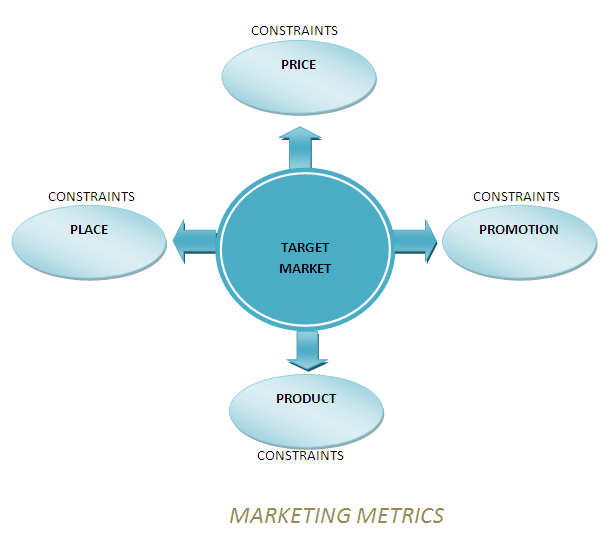
HR Metrics
Managing human capital is an important task as by managing human resources efficiently and effectively, an organization can move on paragon of success. High performance results from skilled employees who get full organizational support and give their full effort to achieve their target. The effort from an employee is driven by motivation, both from internal motivation which is result of self interest in the work profile and external motivation which is result of incentives and additional perks. If the employee will be satisfied with job profile, he/she will give full effort to accomplish company objective and then only company will have better and profitable relation with their customer and other stakeholders.
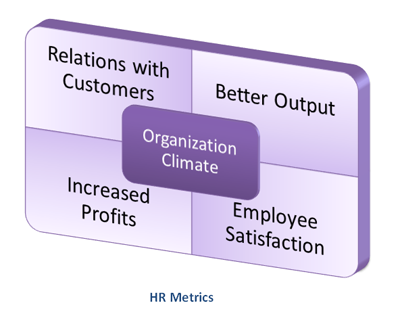
Customer Relationship Management metrics
Customers are the only reason for the existence of a business. Here, comes the requirement for attaining apt access to the customers by delivering lucrative benefits and to gain customer satisfaction. CRM Metrics is a contour that helps to penetrate in a target market with an assurance to provide return on investment. It is a mechanism which is used to provide good customer services with a motive to boost customer satisfaction at a par. With CRM Metrics an organization can easily map out the information about its present and prospective customers. It offers a set of predetermined indicators to easily track out the entire data like customer buy-in, customer segmentation, market invasion, customer loyalty, customer value and so on.
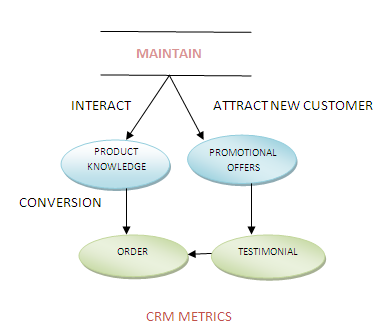
Advertising Metrics:
Main objective of an advertisement is to communicate people (viewers, readers, and listeners) and to persuade them in its favor. It requires considerable thought over market segment to which an organization is focusing on for advertisement. The segment should be very specific in terms of demography, geography, psychograph, behavioral etc because the more focused segment an organization select, the more effective outcome it can get. Once focused group has been selected, organization should allocate proper budget based on effective advertising medium. During advertising, company should also keep evaluating its advertisement for its effectiveness and expected desired result and if require, organization should change or improve its advertisement.
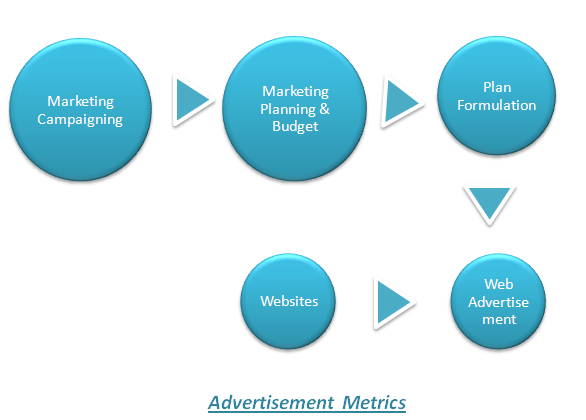
Market Research Metrics:
To run a business continuously and successfully, it is important to keep ourselves up to date with customer preferences, competitor activity, industry growth and opportunity, economic environment, technological updates etc. Market research is a systematic technique to gather information from external environment for the purpose of making the organization a better place to work, a better service provider and a value adder for its stakeholders. There are various research tools and dedicated research companies are available which can be used for fast, efficient and effective market research but before choosing particular research technique, our goal should be clear and focused so that we can give preferences for one alternative over another alternative.
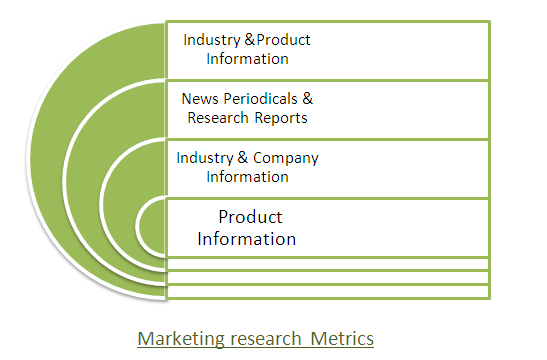
Strategic Management Metrics:
Strategic management is the process of planning, implementing and controlling various cross cultural functions in the direction of company vision, mission and core values. Strategic management requires strategy formulation, evaluation and then implementation considering all component of balance score card. Strategy formulation includes internal and external environment analysis and then setting up the objectives paralleled to specific time line. The plan should specify how to achieve set objectives within deadline so that it add value for all stakeholders in the organization. Strategy evaluation verifies effectiveness of the organization strategy with the help of SWOT analysis tool. It gives an idea about suitability, acceptability and feasibility of the strategy in accordance with organization core competencies. Strategy implementation again involves error free and within time implementation of the plan considering human resource skills.
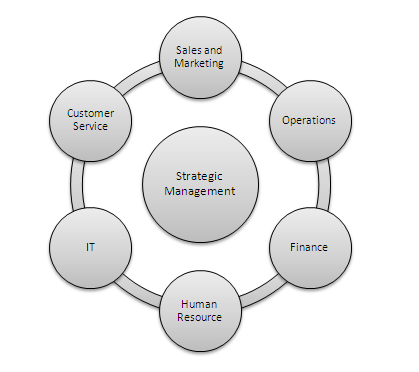
Benchmarking Metrics:
Benchmarking involves comparing our practices to best practices in the industry or in other industry having the same process. Selection of a benchmark requires understanding of problem area which can be determined by conversation with stakeholders or any other research techniques like focus group, surveys etc. Once we know the process which we want to improve, we can start analyzing various other best practices which are most suitable to our organization. After choosing particular benchmark we need to make realistic plans tailored to our capabilities. Execution of plans requires constant monitoring and controlling to asses any further enhancement in proposed plans.
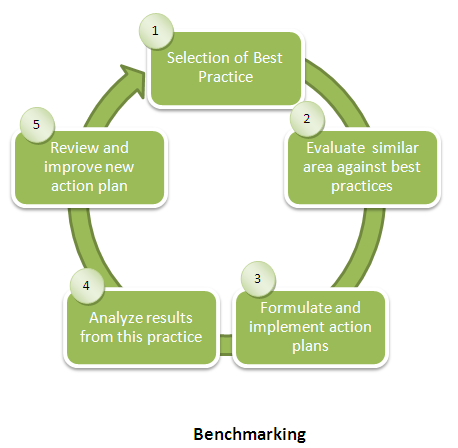
Customer profiling metrics
Customer profitability is the measure of profits generated from a customer over a long period of time. It is important to observe customer profitability because there is a possibility of increasing indirect expenses with the increase in revenue from a customer. At this situation company must analyze dollars lost in having relationship with particular customer and based on that analysis the organization must think of strategy to lower its cost to serve a customer because we can't expect from customer to pay for our inefficiencies. There is a possibility of getting unprofitable business from a customer because the customer is using just one of the services offered from the company, solution to this issue is to encourage the customer to try some more services and hence generate profit from the customer.

Financial planning Metrics:
Financial planning is all about organizing personal or corporate financial affairs and includes cash flow management, asset management, investment planning, risk planning, tax and insurance planning etc. Financial plan is basically a detailed strategy tailored to organization specific situation, for meeting organization goal. The process begins with analysis of current financial situation and based on those setting realistic goals within specific time. Once goal is set, formulation and execution of financial plan is crucial part because financial decision may affect other area of finance. This require proper monitoring of outcomes of plan and controlling the process in the direction of overall objective of financial planning.
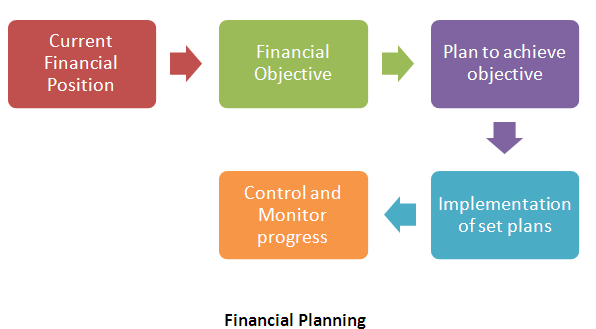
Customer profiling metrics
Having knowledge of the customer is one of essential tenets of a business. Customer profiling includes collecting customer's data like their geographic location, psycho-graphic attitude, purchase behavior like purchase frequency, brand loyalty etc and their demographic data like age, group, sex, religion etc. Customer Profiling helps to analyze and improve our financial condition because it gives an idea about potential customer required to maximize our profit. Customer profiling determines effectiveness of our promotional activities targeted towards particular brand or product range and hence helps in improving our processes. It also helps to understand the influential factors or barrier to purchase and key solution to various issues with products and services. Moreover, it gives information about type of customer required for long term stability and growth opportunities.

Customer profiling
Free Balanced Scorecard Products
- KRI (Key Risk Indicators) Toolkit
- Balanced Scorecard Implementation Guide
- Balanced Scorecard for HR
- Free Balanced Scorecard template
Balanced Scorecard Products:
-
Business Management Metrics: Business Mission and Vision, Business Strategy, Public Sector, Non-Profit, Private Sector, Service Level Agreement.
-
Business Intelligence Metrics: Competitor Analysis, Marketing Research, Benchmarking.
-
Project Management Metrics: Project Management, Product Launch, Operations, Risk Metrics, Change Management, Resource Management, Cost Management.
-
Online Business Metrics: Web Hosting, SEO, Website Design.
-
Finance Metrics: Financial Statement Analysis, Active Portfolio Management, Passive Investments, Financial Crisis, Budgeting and Forecasting, Financial Securities, Financial Insurance Company, Leasing Company, E-commerce Scorecard, Financial Outsourcing, Financial Benchmarking, Earned Value.

BSC Designer - Balanced Scorecard Software
Balanced Scorecard design software Recognized among users as one of the most easy to use KPI software.
Balanced Scorecard Trainings
- Learn more about Balanced Scorecard Trainings we provide;
